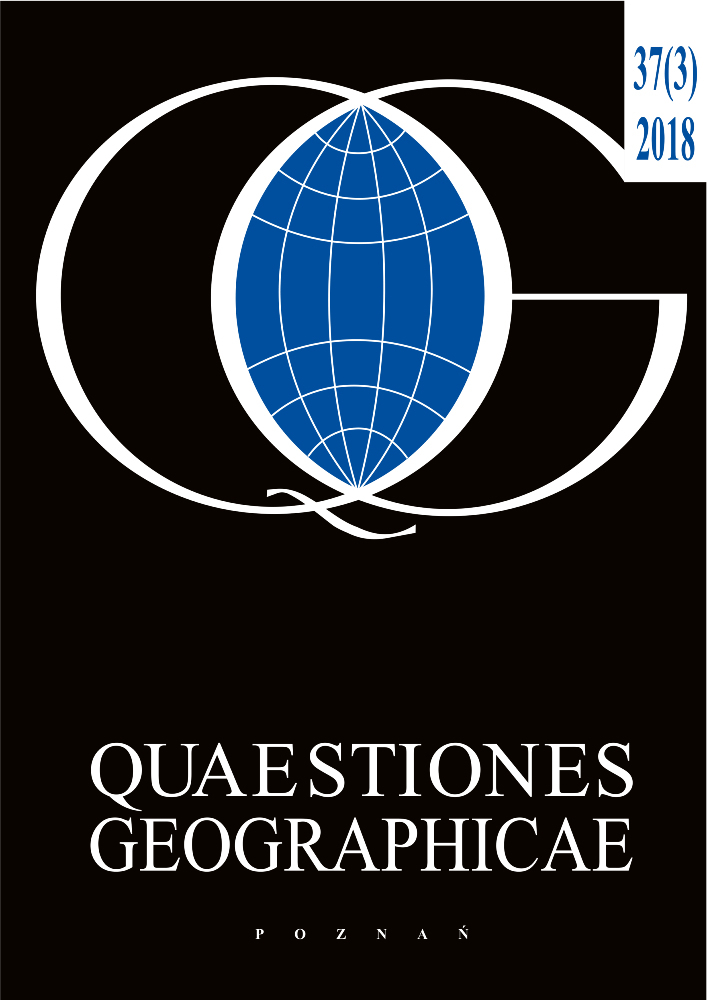Abstract
Community participation has entered the 21st century and the era of e-participation, e-government and e-planning. With the opportunity to use Public Participation Support Systems, Computer-Aided Web Interviews and crowdsourcing mapping platforms, citizens are equipped with the tools to have their voices heard. This paper presents a case study of the deployment of such an online mapping platform in Jeseník, Czech Republic. In total, 533 respondents took part in the online mapping survey, which included six spatial questions. Respondents marked 4,714 points and added 1,538 comments to these points. The main aim of the research was to find whether there were any significant differences in the answers from selected groups (age, gender, home location) of respondents. The results show largest differences in answers of various (below 20 and above 20 year) age groups. Nevertheless further statistical examination would be needed to confirm the visual comparison.References
Berg N., 2005. Non-Response Bias. In K. Kempf-Leonard, ed. Encyclopedia of Social Measurement. London: Academic Press: 865–873. Online: https://papers.ssrn.com/sol3/papers.cfm?abstract_id=1691967 (accessed September 25, 2017).
Brown G., Pullar D.V., 2012. An evaluation of the use of points versus polygons in public participation geographic information systems using quasi-experimental design and Monte Carlo simulation. International Journal of Geographical Information Science 26(2): 231–246.
Brydon-Miller M., Greenwood D., Maguire P., 2003. Why Action Research? Action Research 1(1): 9–28.
Cartwright W., 2012. Neocartography: Opportunities, issues and prospects. South African Journal of Geomatics 1(1): 14–31.
Cinderby S., 1999. Geographic information systems (GIS) for participation: the future of environmental GIS? International Journal of Environment and Pollution 11(3): 304–315.
Czech Statistical Office, 2013. Census 2011. Online: https://www.czso.cz/csu/sldb/home (accessed August 3, 2018).
Czech Statistical Office, 2017. Demographic trends. Online: https://vdb.czso.cz/vdbvo2/faces/en/index.jsf?page=profil-uzemi&uzemiprofil=31548&u=__VUzEMI__97__19# (accessed September 22, 2017).
Dunn C.E., 2007. Participatory GIS a people’s GIS? Progress in Human Geography 31(5): 616–637.
Huck J., Whyatt D., Coulton P., 2014. Spraycan: A PPGIS for capturing imprecise notions of place. Applied Geography 55: 229–237.
Jankowski P., Czepkiewicz M., Młodkowski M., Zwoliński Zb., 2016. Geo-questionnaire: A Method and Tool for Public Preference Elicitation in Land Use Planning. Transactions in GIS 20(6): 903–924.
Lawson A.R., Pakrashi V., Ghosh B., Szeto W.Y., 2013. Perception of safety of cyclists in Dublin City. Accident; analysis and prevention 50, pp. 499–511.
Li X., Zhang C., Li W., 2015. Does the Visibility of Greenery Increase Perceived Safety in Urban Areas? Evidence from the Place Pulse 1.0 Dataset. ISPRS International Journal of Geo-Information 4(3): 1166–1183.
Lipscomb S., 2014. Visualizing Perceived Safety in a Campus Environment. Online: http://www.imagin.org/awards/sppc/2014/papers/sam_lipscomb.pdf (accessed December 1, 2015).
Lissner L., Skoog I., Andersson K., Beckman N., Sundh V., Waern M., Zylberstein D.E., Bengtsson C., Björkelund C., 2003. Participation bias in longitudinal studies: experience from the population study of women in Gothenburg, Sweden. Scandinavian Journal of Primary Health Care 21(4): 242–247.
Melas P., Correndo G., Middleton L., Sabeur Z.A., 2015. Advanced Data Analytics and Visualisation for the Management of Human Perception of Safety and Security in Urban Spaces. In: R. Denzer, R.M. Argent, G. Schimak, J. Hřebíček (eds.), Environmental Software Systems. Infrastructures, Services and Applications. ISESS 2015. IFIP Advances in Information and Communication Technology, Springer, Cham, v. 448: 445–454.
Pánek J., 2016. From Mental Maps to GeoParticipation. The Cartographic Journal 53(4): 300–307. DOI: 10.1080/00087041.2016.1243862.
Pánek J., Mařincová L., Putalová L., Hájek J., Marek L., 2017b. Crowdsourcing of environmental health quality perceptions: A pilot study of kroměříž, Czech Republic. In: M. Leitner, J.J. Arsanjani (eds.), Citizen Empowered Mapping. Geotechnologies and the Environment, Springer, Cham, v. 18: 261–280.
Pánek J., Pászto V., 2017. Crowdsourcing mapping and participatory planning support system: Case study of Brno, Czechia. In: M. Paterson (ed.), In: Peterson M. (eds.) Advances in Cartography and GIScience. ICACI 2017. Lecture Notes in Geoinformation and Cartography. Springer, Cham: 61–73.
Pánek J., Pászto V., Marek L., 2017a. Mapping emotions: spatial distribution of safety perception in the city of Olomouc. In: I. Ivan, A. Singleton, J. Horák, T. Inspektor (eds.), The Rise of Big Spatial Data. Lecture Notes in Geo-information and Cartography. Springer, Cham: 211–224.
Pánek J., Pászto V., Šimáček P., 2018. Spatial and Temporal Comparison of Safety Perception in Urban Spaces. Case Study of Olomouc, Opava and Jihlava. In: I. Ivan, J. Horák, T. Inspektor (eds.), Dynamics in GIscience. GIS Ostrava 2017. Lecture Notes in Geoinformation and Cartography. Springer, Cham: 333–346. DOI: 10.1007/978-3-319-61297-3_24.
Patryn L., 1912. Der Ergebnisse der Volkszählung vom 31. Dezember 1910 in Schlesien. Online: https://www.sbc.org.pl/dli-bra/publication/edition/11734?id=11734 (accessed September 22, 2017).
Rød J.K., Ormeling F., Van Elzakker C., 2001. An agenda for democratising cartographic visualisation. Norsk Geografisk Tidsskrift 55(1): 38–41.
Salesses P., Schechtner K., Hidalgo C.A., 2013. The Collaborative Image of the City: Mapping the Inequality of Urban Perception. PLOS ONE 8(7): e68400.
Traunmueller M., Marshall P., Capra L., 2015. Crowdsourcing Safety Perceptions of People: Opportunities and Limitations. In: T.Y. Liu, C. Scollon, W. Zhu (eds.), Social Informatics. SocInfo 2015. Lecture Notes in Computer Science, Springer, Cham, v.9471: 120–135.
